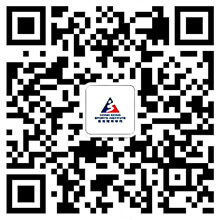Sport Nutrition Education No. V - Maximise Your Energy Store for Competition
Carbohydrate = Energy
Carbohydrate is the source of energy for an athlete, like gasoline for an automobile. Carbohydrate is metabolised into glucose in the body. Glucose maintains blood sugar at normal levels, is the energy for the brain and can be stored as muscle glycogen. Athletes can maximise muscle glycogen storage by increasing dietary carbohydrate intake. This is called "Carbohydrate Loading".
Carbohydrate loading is suitable for events which last longer than 90 minutes, like cycling, marathon, triathlon, and events which have more than one game in a day, especially those which game time is long or unpredictable, like windsurfing, badminton, soccer, squash, tennis etc.
However, carbohydrate loading is not suitable for short and power-related events, like short putt, high jump, sprint, weight lifting, shooting, bowling etc.
Where is the glucose stored?
A sedentary person has 13 grams of glycogen per kilogram muscle, but an athlete can have 32 grams of glycogen per kilogram muscle. Carbohydrate loading can increase glycogen storage to 35 - 40 grams of glycogen per kilogram muscle.
Carbohydrate Loading
60’s Astrand
The traditional method for increasing muscle glycogen stores was introduced by Astrand in 1967. It was shown to be effective in prolonging endurance exercise and sports performance. Carbohydrate loading should be initiated seven days before the event. In the first four days, athletes should exercise to exhaustion and consume a low carbohydrate diet in order to deplete their muscle glycogen stores. Then, three days before the event, a high carbohydrate diet of 9-10g/kg body weight/day is consumed. For example, an athlete weighing 60kg needs to consume 540 - 600g carbohydrate per day three days before the event.At the same time, training needs to be decreased to lower energy expenditure in order to maximize stores.
However, it is difficult to follow a low carbohydrate diet with high intensity training in the first four days. Athletes may experience overwhelming fatigue, irritability and poor immunity. It is unpleasant and may affect preparation for competition. Low carbohydrate intake and increased exercise intensity will deplete glycogen stores in the body, brain and muscles. It may result in muscle fatigue and even dizziness, which may increase the risk of injuries.
Modified Carbohydrate Loading
An alternative way was developed in the 80’s which had eliminated the depletion phase in the first four days. Athletes will increase carbohydrate intake to 9-10g/kg body weight and decrease training for three days prior to the event. Training adjustment should be decided by the coach. Glycogen will be stored in exercising muscle group, therefore, a long distance runner should not be swimming three days before the competition.
The physical and psychological detrimental effects resulting from the depletion phase of the traditional method are avoided. However, the body can still achieve similar effect for maximum muscle glycogen storage prior to the event with this modified method.
A sample diet which consists of 550g carbohydrate and 2900kcal (suitable for an athlete weighing 60kg) :
| Breakfast : | skimmed milk | 1 cup |
| corn flakes | 1 cup | |
| banana | 1 | |
| bread | 2 slices | |
| jam | 3 tsp | |
| Morning Snack: | apple juice | 1 cup |
| chiffon cake | 1 cup | |
| Lunch : | rice | 2 bowls |
| green vegetables | 4 oz | |
| chicken thigh | 1 piece | |
| Sweetened soy milk | 1 cup | |
| Afternoon Tea : | orange juice | 1 cup |
| bread | 2 slices | |
| jam | 3 tsp | |
| Dinner : | rice | 2 bowls |
| Chinese meat loaf | 3 oz | |
| green vegetables | 4 oz | |
| apple | 1 | |
| red bean sweet soup | 1 bowl | |
The following are examples of food containing 10g carbohydrates. Athletes may combine these in order to achieve the goal of carbohydrate loading (9-10g carbohydrate/kg body weight/day):
| oatmeal (cooked) | 1/3 cup |
| pasta (cooked) | 1/3 cup |
| rice (cooked) | 1/5 cup |
| soda crackers | 2 pieces |
| bread | 1/2 slice |
| corn flakes | 1/2 cup |
| corn on the cob | 1/3 |
| carrots (cooked) | 3/4 cup |
| baked potato | 1 (egg size) |
| baked beans in tomato sauce | 4 tbsp |
| apple or pear or orange | 1 (small) |
| kiwi fruit | 1 |
| banana | 1/2 |
| grapes | 10 |
| canned fruit | 1/3 cup |
| orange juice | 1/2 cup |
| milk or soy milk | 1 cup |
| plain yogurt | 150 g |
| horlicks powder | 15 g |
| soft drink | 1/2 cup |
References:
- Williams, C., 2007. Carbohydrate as an energy source for sport and exercise. In D. MacLaren, ed. Advances in sport and exercise science series: nutrition and sport. Liverpool: Churchill Livingstone Elsevier. Ch. 3.
- Burke, L. & Deakin, V., 2006. Clinical sports nutrition. 3rd ed. Australia: McGraw-Hill.
 ID: hksportsinstitute
ID: hksportsinstitute

